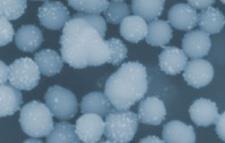New studies show nanoparticles can concentrate from one species to another through feeding, prompting questions about the design of future particles
New research suggests that nanomaterials that are released into the environment could accumulate in food chains. Studies by groups working on two different types of nanoparticle - gold nanoparticles and cadmium selenide (CdSe) quantum dots - show that they can be transferred from species lower down in food chains to those that feed on them, concentrating at the higher level.
Many pollutants are taken up by plants or bacteria at the bottom of food chains, but of particular concern are those that are ’biomagnified’ at higher levels, meaning they accumulate in higher concentrations in organisms further up the food chain. The classic example is the pesticide DDT.
Patricia Holden’s team at the University of California, Santa Barbara, US, and Paul Bertsch’s team at the University of Kentucky, US, tried to understand whether nanoparticles might behave in this way. Taken together, says Bertsch, their studies ’raise a flag’ since they provide direct evidence of biomagnification.

In the Kentucky group’s study, caterpillars feeding on tobacco plants grown in solutions containing gold nanoparticles accumulated the nanoparticles at concentrations between 6-12 times higher than those measured in the plants.1 Holden’s team, meanwhile, showed that quantum dots concentrated at levels five times higher in protozoa than in the Pseudomonas aeruginosa bacteria they preyed upon.2
According to Holden, the fact that the findings are similar is interesting because they come from two very different types of environment - the work in caterpillars is representative of a simple terrestrial food chain, while Holden’s own work in protozoa is orientated towards aquatic environments.
Bertsch says the results of his team’s work with gold nanoparticles were particularly surprising because metals - with very few exceptions - do not biomagnify. ’The surprise was that the ability to eliminate these nanomaterials appears to be quite inefficient and therefore these materials are accumulating in tissues,’ he says.
Impossible to generalise?
The findings represent ’potentially important’ transfer mechanisms for human health, says Jamie Lead, who studies the environmental impacts of nanoparticles at the University of Birmingham, UK. Since humans sit at the top of the food chain, concentrations could be dangerous if biomagnification continued all the way up. However, Lead adds that it is difficult to generalise between nanoparticles given very different physical and chemical parameters.
Bertsch agrees. ’It’s really hard to generalise,’ he says. ’What we’re trying to do is work with a variety of materials and look at some of the differences.’ He notes that gold is a good starting point because it is stable and inert, whereas studies with silver nanoparticles present more of a challenge as silver has various chemical forms.
According to Richard Holbrook, a chemical engineer at the National Institute of Standards and Technology in Maryland, US, much of the existing literature on biomagnification lacks crucial information about nanoparticle characteristics that would be needed to make findings relevant for other materials. In this respect, he says, both the Kentucky and California teams did a good job.
It’s equally difficult to generalise about how other plants or bacteria might accumulate nanoparticles based on studies in specific species. Holden says we might expect to see a range of different propensities for taking up nanoparticles, but she doesn’t think a case-by-case approach is always necessary. ’We’re still at an early stage of accumulating information that will hopefully lead quickly to paradigms,’ she says.
Designing safer nanoparticles
The big question, says Holbrook, is what’s going to happen if more and more studies like these report biomagnification. Both authors say they are hopeful that manufacturers will be able to ’design out’ the characteristics of nanoparticles that could make them unsafe, for instance, by adding coatings. Earlier work by Holden’s team suggests nanoparticle interactions that cause membrane damage through free radical formation might be involved in allowing particles to enter cells.3 Thus, coatings designed to reduce free radical formation might go a long way to making them safer, she says.
As Holbrook points out, however, it’s a fine balance between safety and application. ’You can envision designing a nanoparticle so environmentally benign that it doesn’t offer any commercial value over what is being done today - that’s no good for innovation,’ he says. ’You can also envision synthesising nanoparticles that are fantastic in products but incredibly toxic - that’s no good for the environment. The question is can you design something with the best of both worlds?’
Hayley Birch
References
Environ. Sci. Technolet al, Nature Nanotechnology)






No comments yet